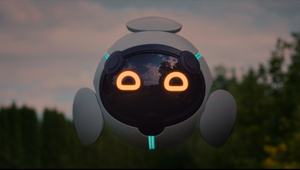
“Sound Communicates Ideas That Extend Beyond the Frame of the Picture”

Q> Sound has been a bit of an invisible art. Do you think it is becoming more and more recognised?
Marcin> It’s definitely gaining recognition and more directors are taking it seriously. It’s being considered earlier on in the process as an effective narrative tool. Directors work closely between the crafts to see how one area can influence another. Music and sound departments have traditionally worked separately but are beginning to work more closely, in harmony with one another.
Q> Which directors do you feel are best at considering sound design as part of their scripts?
Marcin> Quentin Tarantino is great at using sound for storytelling - not just with music but with effects. He writes his scripts with music in mind and he is aware of the sound palette much earlier on in the process. I also loved the sound design in No Country For Old Men, directed by the Coen brothers. Although there was no music, you don’t feel like it’s missing because it’s filled with sound design.
Q> What have been some of your favourite examples of sound design within film or TV recently?
Marcin> I absolutely loved Chernobyl - one of the best examples of sound design I’ve heard in a very long time. Especially the tension created through the crackling radiation gages - just brilliant. It’s a great example of how sound can work with the visuals to create an even more powerful feeling.
I actually had the chance to meet the legendary field recorder, Chris Watson last year who told me he went to a derelict Eastern European factory to record sounds for the show’s soundtrack, created by Hildur Guðnadóttir. She won an Oscar this year for the Joker which had a really dark, gritty sound palette and worked really well in conjunction with the music. The subway scene in particular is done really well, where sound is used as a tool for building tension. It’s very well thought out.
Q> Speaking of the Joker, how do you feel about the Oscar nominations and winners this year?
Marcin> From the point of view of sound, I thought Joker and Ford v Ferrari were the best contenders. Ford v Ferrari in particular is a film built for sound. The sound editor, Donald Sylvester went to great lengths trying to capture the noise of the cars, recording sounds both inside and out to create an authentic feeling. When you see the character in the car, you feel it too. You’re enveloped in the sound of the engine creaking, the gears shifting and the air rushing past the windows.
Q> What elements make for great sound mixing and editing that the average viewer could listen out for?
Marcin> Well the issue is, when sound design is done properly, you shouldn’t actually notice it. It’s not supposed to take away from the story, it’s supposed to support it in a very subtle way. But you do notice sound when it goes wrong.
One way to learn about how important sound is, is to watch a scene of a film on mute - you realise how much information is lost. When I watch films I think about the dynamics between loud and quiet scenes and how well the music is mixed in. But again, when it’s really good, I forget to pay attention to all that!
Q> How have you seen sound design develop over the past year and what do you predict to see in 2020?
Marcin> At ENVY Advertising we’re seeing more and more work come in for social media and Instagram. I think gaming and VR are going to get bigger too - it’s a huge industry.
Sound and music are being seen as more of a collaboration rather than two separate departments so I’m looking forward to seeing the two working more in unison.
Q> How do you approach your own work?
Marcin> My skill set lies in short form - commercials, trailers, promos and short films. These projects usually have quite a quick turnaround, so I have to work in a very organised way. I’ve also worked on a number of short films and with these I have much more time for experimenting.
The work of a true artist is never really finished. You can always keep polishing but you need to be aware of your time frame and that’s the challenge with short form. It’s important to work on both though as I learn new things and expand my skill set through short films which I can then apply to the commercials and promos I work on.
Q> What have been some of your favourite recent projects to work on?
Marcin> adidas 4D was such a fun and quirky commercial to work on. There were a lot of transition sounds to be created and I wanted to do those from scratch. I tied a cheese grater to the end of a piece of rope to create some swishing sounds which I took into the session to process.













